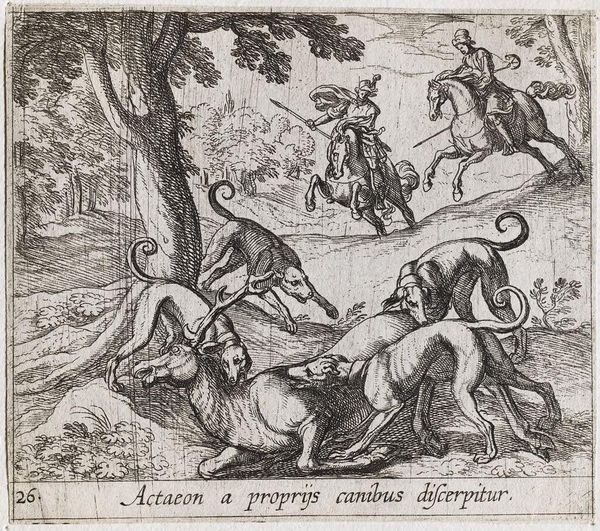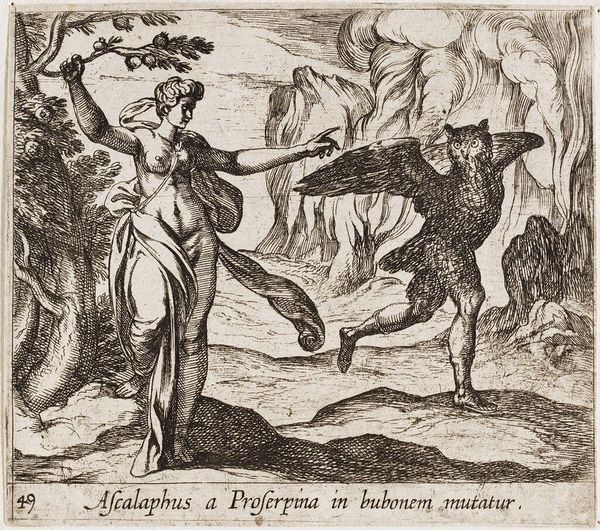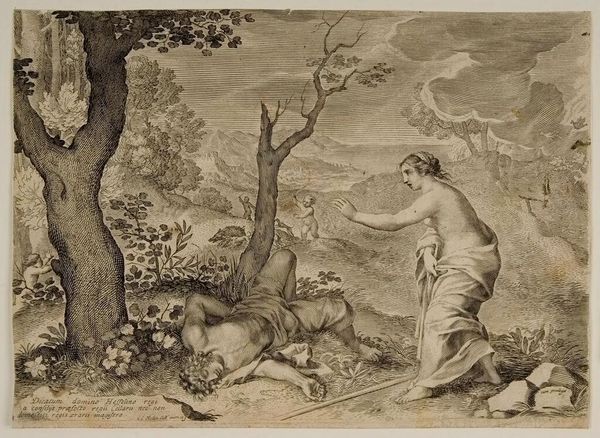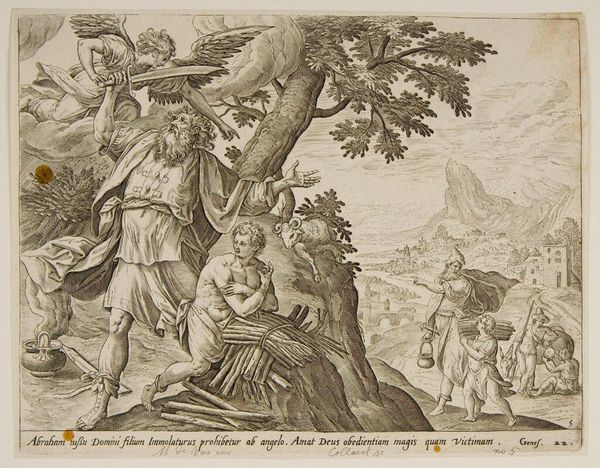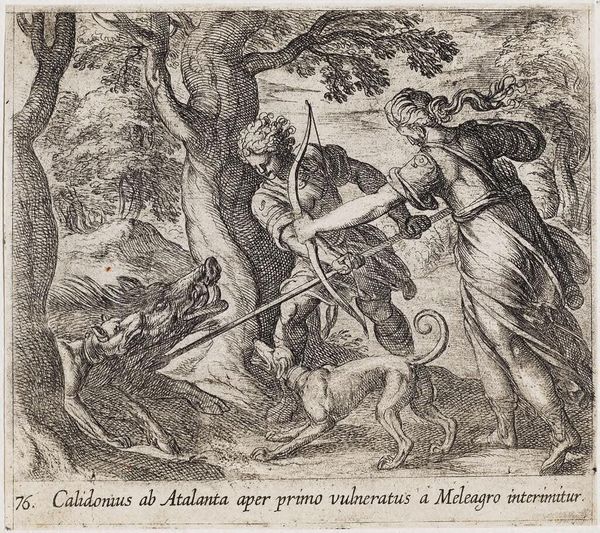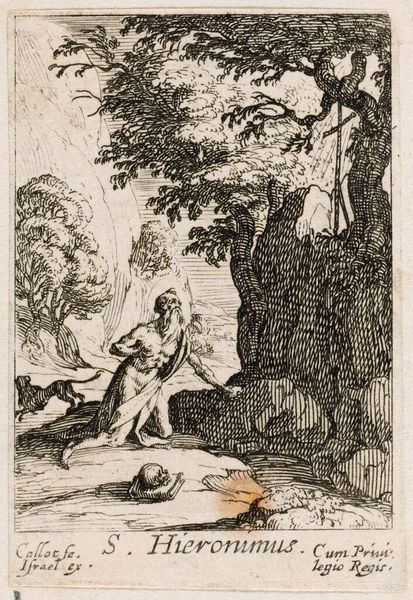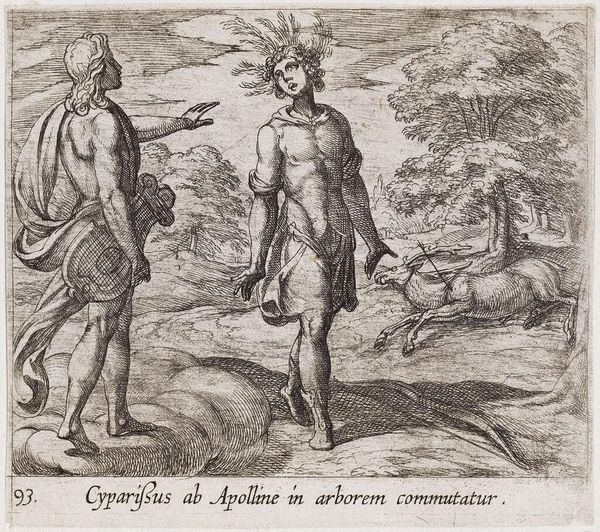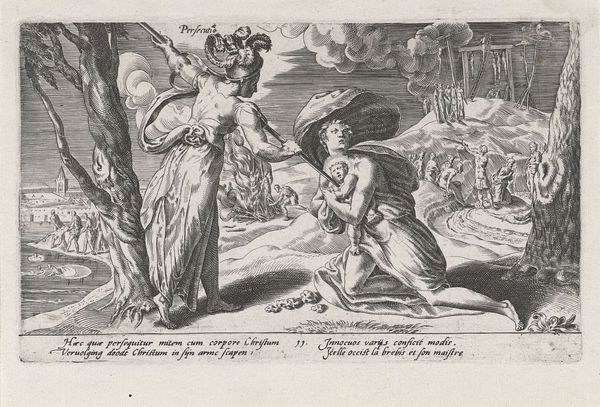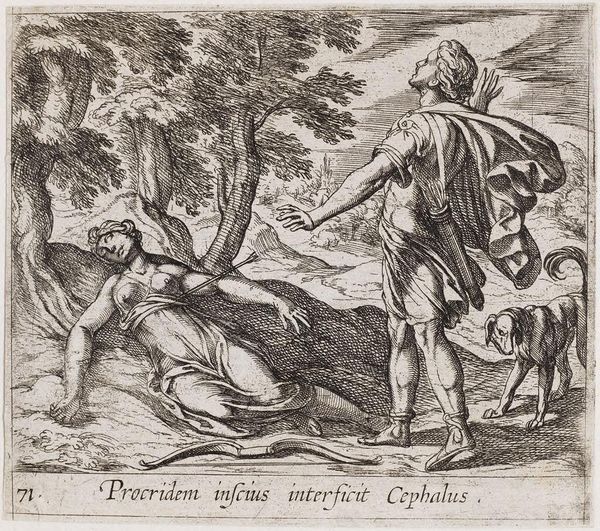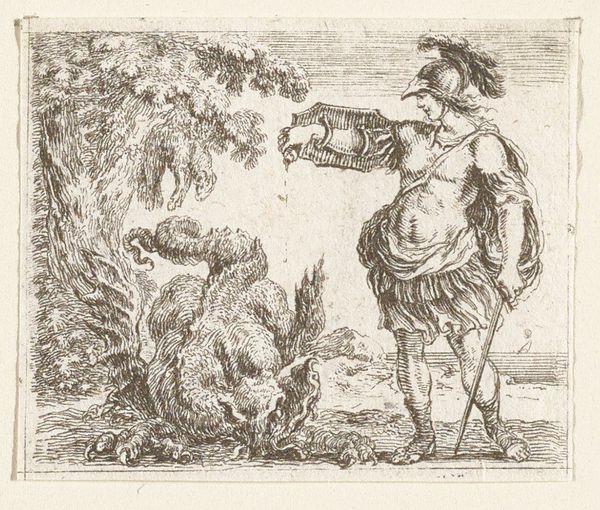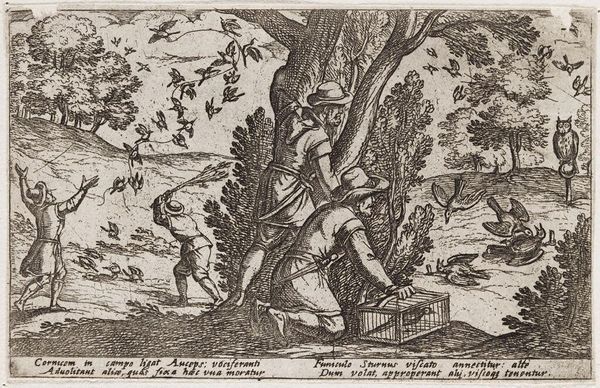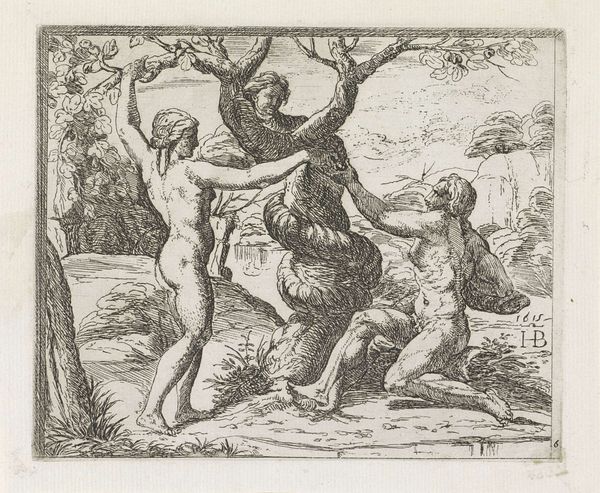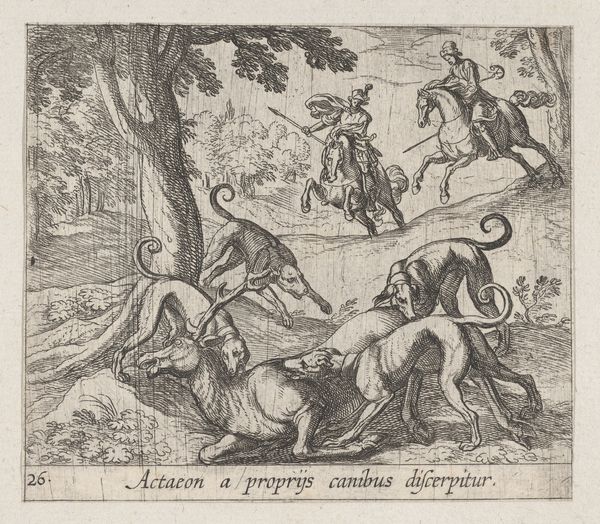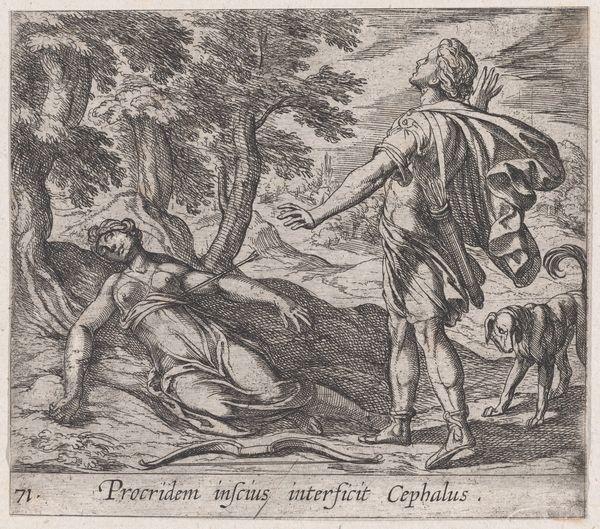
Dimensions: 10.5 x 12 cm (4 1/8 x 4 3/4 in.)
Copyright: CC0 1.0
Curator: This engraving by Antonio Tempesta, created sometime between 1555 and 1630, depicts Byblis Changed to a Stream. I’m immediately struck by the dynamism conveyed through simple lines; it feels incredibly sorrowful. Editor: The weeping woman transforming into a spring reminds me of the long history of water as a symbol of cleansing and transformation, but also of inconsolable grief across cultures. Curator: Absolutely, and Tempesta’s choice to depict the Ovidian myth specifically highlights themes of forbidden love, gendered expectations, and societal punishment. The image becomes a commentary on the power structures that confine women. Editor: Notice how the figures in the background seem to be pointing towards her transformation, almost accusingly. This gesture emphasizes Byblis's isolation and the societal judgment that precipitates her metamorphosis. Water as a signifier of something lost forever. Curator: It also raises the question of agency—is this a transformation, a punishment, or a form of liberation? Situating it within the patriarchal norms, it's worth questioning whether the change allows her an escape from societal constraints. Editor: It is the artist’s way of immortalizing the story and trauma in a way that remains accessible to audiences across time and place. Curator: Exactly. I feel it invites us to reflect on the enduring impact of societal pressures and gender roles. Editor: And perhaps to reconsider the loaded symbolism we project onto natural elements.
Comments
No comments
Be the first to comment and join the conversation on the ultimate creative platform.
